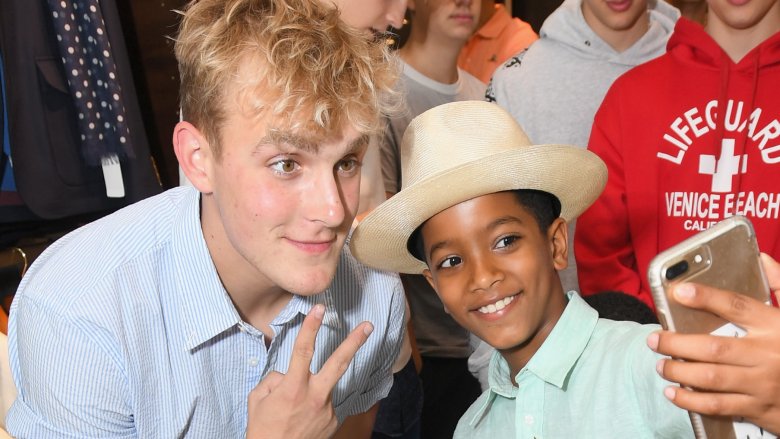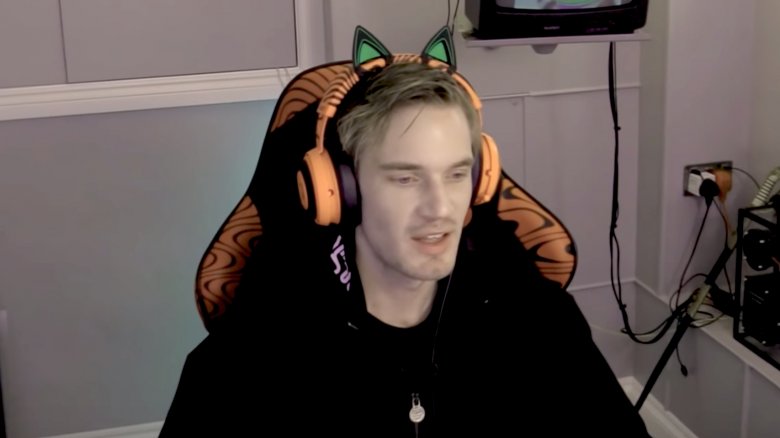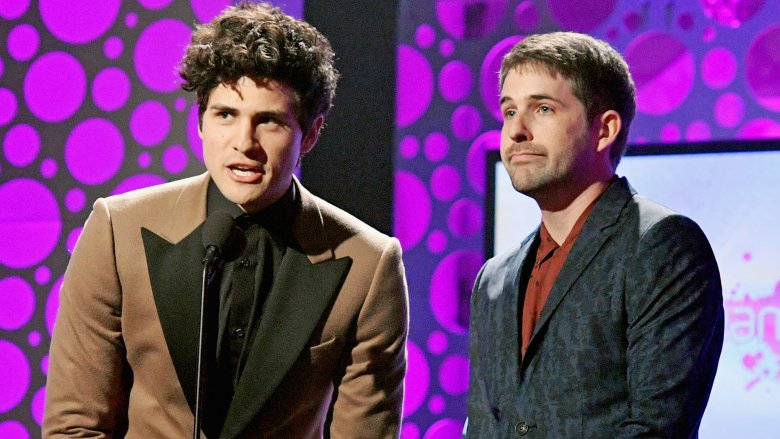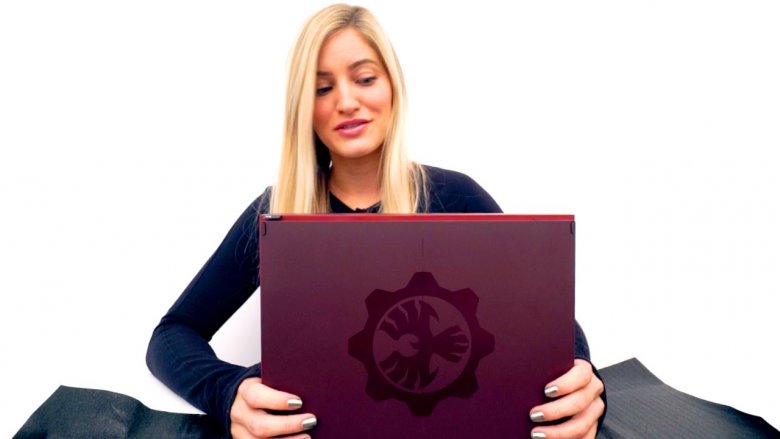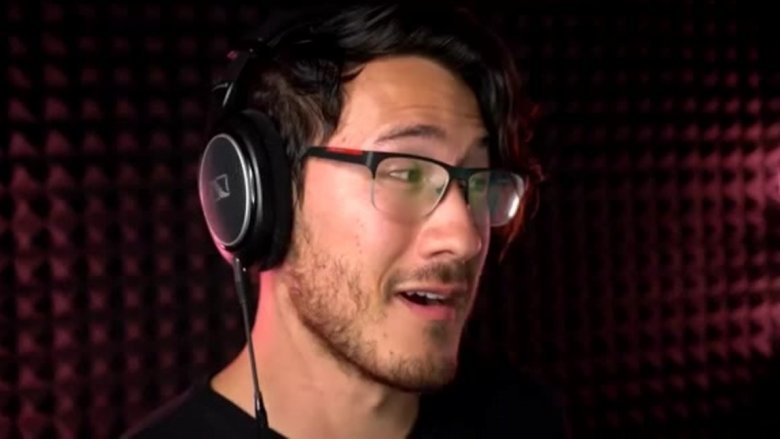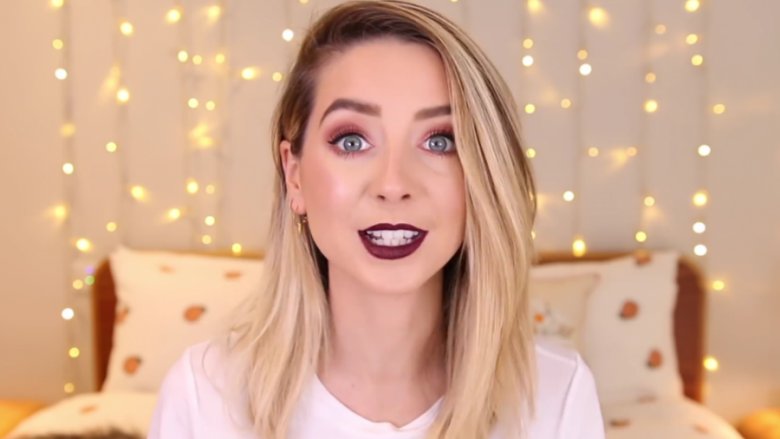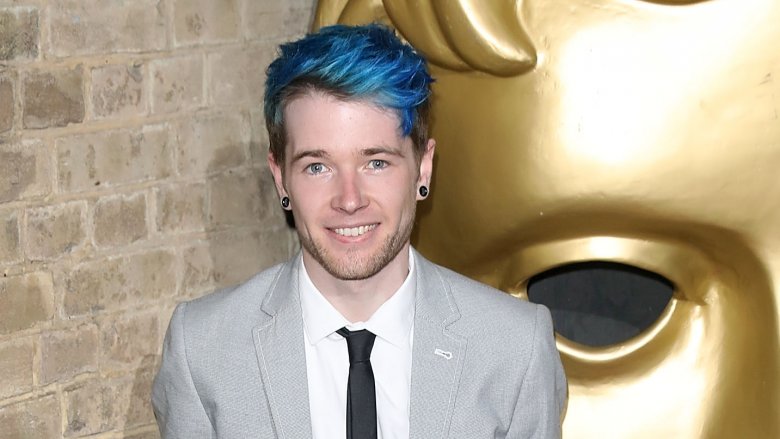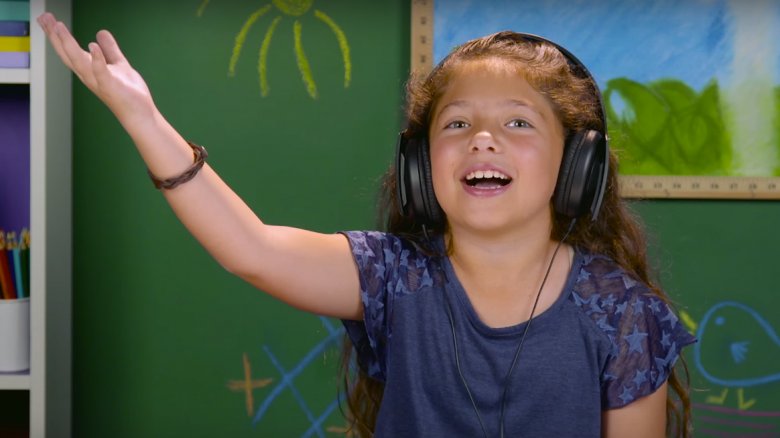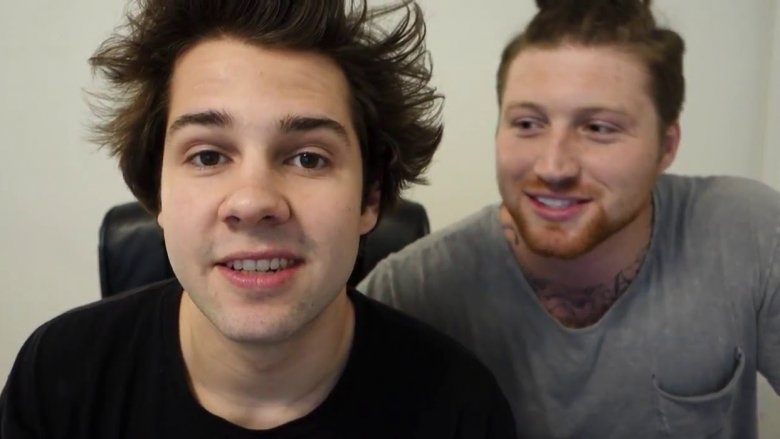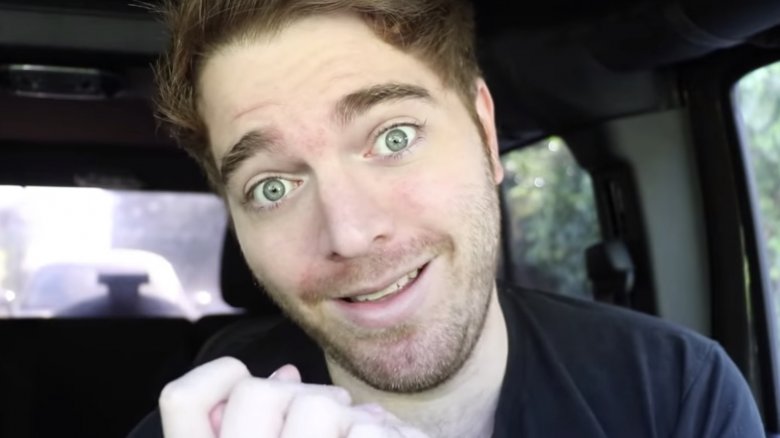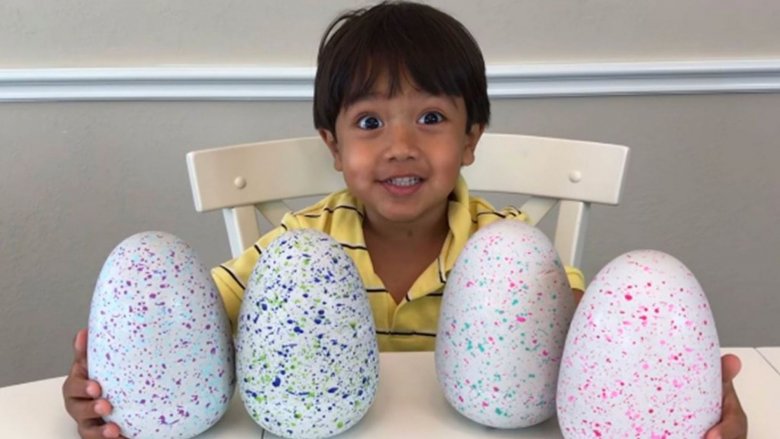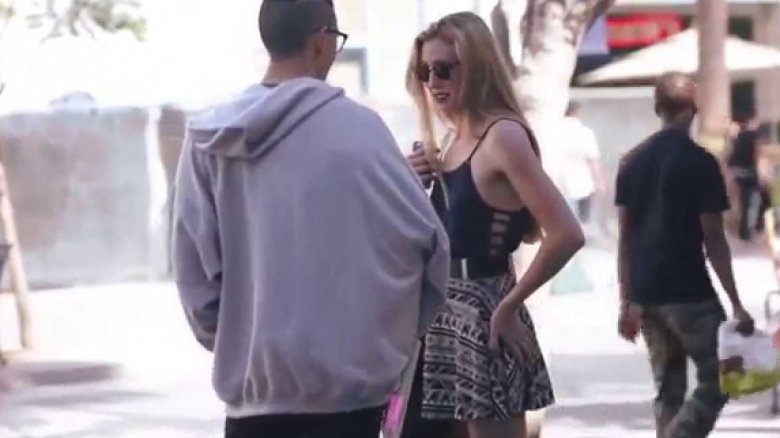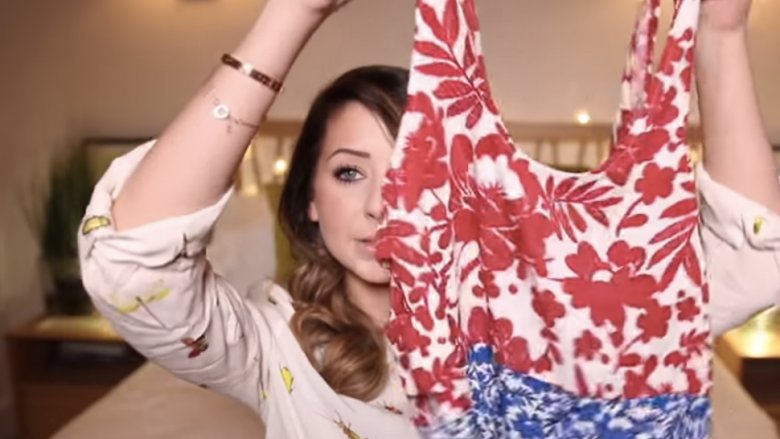Things Kids Love About YouTube Stars That Adults Don't Get
YouTube seems to be an ever-growing platform, but its endless videos are not for everyone. You can imagine what most adults think of the popularity of YouTube and the celebrities that make millions on the platform. After all, every generation imagines that their generation was best, and each cultural shift is one for the worse.
But adults don't have to understand YouTube stars to respect them. After all, these are the people who children listen to most, and, in some cases, probably listen to more than they listen to their parents. According to the Pew Research Center, 85 percent of teens use YouTube, making it the online platform with the most adolescent users. Since YouTube doesn't paint the proper picture of entertainment for adults like it does for kids, we felt it was necessary to breakdown the barriers that are keeping them from understanding the website, its stars, and why kids these days love it.
Here are the answers to the questions that many in-the-dark adults have about YouTube, as well as a look at the possible explanations for what makes the site's stars so enthralling for kids.
Gaming is a spectator sport
It takes parents a while to adjust to changes in technology. At first, they didn't understand why kids wanted to stare at televisions when there was a perfectly good world outside. They didn't understand why kids wanted to play video games when they could play in real life. Now, they don't understand why kids would rather watch someone play video games than play those same video games themselves.
Well, times are a changin'. According to Inc., gamers between 18 and 25 years of age now watch close to three and a half hours of video game streams per week. Many of those viewers fit our expectations because, according to an Ipsos study (via Think With Google), "74% of YouTube gamers say they go to YouTube to learn how to get better at a game." Self-improvement. That's easy to understand. But what about those who aren't interested in getting better? What about the viewers who watch games they don't even play?
There are many possible explanations. The Ipsos study highlights the sense of community that gamers find in YouTube. They get to interact with other gamers while watching visuals that interest them. Furthermore, according to a study conducted by Tampere University, watching live streaming video games provides a unique activity for viewers. Viewing is more passive than playing but more active than traditional television watching. This low-pressure middle ground appears to be the ideal environment for gamers to relax.
More relatable than celebrities
For adults who grew up with traditional celebrities, YouTube stars may seem a little second rate. To the kids who spend their days on YouTube, however, not only are these stars more influential, they're also more relatable and more accessible than traditional celebrities. Just like the adults who fawn over movie stars and other celebs, kids worship YouTube personalities. The major difference between the two celebrity types is that famous YouTubers are perceived to be (or actually are) available.
According to a study conducted by Defy Media (via Business Insider), YouTube stars are more influential than traditional celebrities when it comes to branding and product suggestions. This may be because the stars feel closer and more human than other celebs. Several of the respondents in the study mentioned YouTubers being more available on a day-to-day basis, even posting videos during the holidays. It appears that the live or on-demand aspect of YouTube creates stronger bonds between the stars and their fans than those connected across the huge chasm of show business.
According to Variety, teens connect more with YouTube stars because the experience is more "intimate and authentic." YouTube stars appear less polished, creating a more appealing perception of reality for young people. In other words, traditional stars may not be real enough for kids today.
Thinking outside the box
It's not a stretch to state that unboxing videos are the most alien of the major kid YouTube trends for many adults. If you thought your parents didn't understand your taste in music, try telling them you watch people open boxes online. Obviously, that's a pretty simplistic way of describing these videos, but that's the gist of it.
Unboxing first gained popularity with adults, specifically in the tech community on product review channels. Now there are countless unboxing channels aimed at children with some offering product reviews while others focus on reactions, the act of unboxing, or even fictional storylines. While child-centered unboxing videos may seem strange, they have become one of the most popular genres on YouTube.
Why? Well, some psychologists argue that viewers gain pleasure from seeing a new product taken out of a box. Some suggest these videos are addictive because consumerism is addictive and children are lusting after new things. Yet, maybe these videos aren't all that insidious. It's possible, as stated on Motherly, that unboxing videos provide a perfect blend of hypnotic entertainment for young kids. The short videos present slow and deliberate pacing, bright colors, and entertaining visuals. The videos are focused on a single topic, making the kids both relaxed and stimulated at the same time. The truth is we don't really know if unboxing videos are good or bad for kids. We just know they like them.
They challenge themselves
Parents may not understand why their kids watch YouTube stars perform different challenges, but there's a camaraderie in it. Whether they're taking the harmless "Try Not to Laugh Challenge," getting sick in "The Ghost Pepper Challenge," or even risking their lives in the "The Bird Box Challenge," YouTubers' challenges connect people.
While the stars may look silly or desperate in these challenges, they're also products of the system. "People are worried about taking risks, so a lot of the content feels quite similar," said YouTuber Charlie McDonnell in an interview with The Guardian. That helps explain why we see new different versions of the same thing. And the more dramatic the response, the better.
Emma Blackery tells The Guardian that the over-saturation of YouTube forces people to one up the others. "Now everyone's a YouTuber, or if they're not, they know a YouTuber. You have to stand out, which is why people do more extreme things and more daring videos." The result has led to YouTubers doing some of the dumbest things imaginable for views. YouTube's even stepped in to squash any dangerous challenges to try and protect people from themselves. But this isn't new — challenges have been around forever. The only difference is that your parents didn't have the technology to show their attempts to the world.
Beauty is more than screen deep
Beauty and fashion vloggers like Zoella are some of the most popular YouTube stars in the world. Now their fans certainly aren't all kids and teens, but many are. While some people see these channels as shallow consumerism, unhealthy, and superficial, these vloggers can help keep young viewers informed and current.
We get it. Many parents hope their children become trailblazers and set their own beauty and fashion standards. We hope that one day young people don't feel forced to conform or attempt to meet unrealistic expectations. Until that time, however, kids are going to follow trends, and YouTube stars are the modern trendsetters. According to an Ipsos study (via Think with Google), 70 percent of young viewers believe that YouTube stars "shape culture," and 60 percent take consumer advice from them. It's not an accident and it's not unique to this time period.
Just like celebrities of yesteryear, these stars impact the way people purchase. Instead of people buying diamonds because Elizabeth Taylor told them to, they're now buying makeup because a more accessible YouTube celebrity endorsed it. If anything has changed, it's that YouTube fashion and beauty advice is now vetted in near real-time by the online community.
They're just so engaging
One of the things that best separates YouTube celebrities from traditional celebrities is fan engagement. Sure, your favorite singer might sign an autograph or respond to a tweet here or there, but most are pretty inaccessible. Perhaps because people have just resigned themselves to being spectators for so long, the fans of traditional celebs are happy with that arrangement.
Kids, however, aren't about that life. They take to YouTube, and they connect directly with the stars they idolize. When Variety surveyed youths on the most influential celebrities, the top five slots were awarded to YouTube stars. One of the major criteria in this survey was approachability. Compared to traditional celebrities, YouTubers foster a much more engaged and involved fanbase.
According to the Ipsos study, visitors on YouTube stars' videos perform twice as many actions and submit 12 times as many comments than those on traditional celeb videos. For some fans, this level of interaction may give them a sense of involvement or even ownership. Some YouTubers even allow their fanbases to drive the content through frequent Q&A sessions, suggestions, and/or live interactions. The modern celebrity could probably learn a lot from YouTube stars.
Getting a reaction
For adults, the reaction video is a strange trend. Why would anyone want to watch someone react? Well, there are several possible explanations behind this phenomenon. These incredibly popular videos dominate YouTube, and plenty of the platform's stars have gotten behind it to share their reactions with their fans.
According to clinical psychologist Andrea Weinstein, who spoke with Ars Technica, kids love these videos because humans yearn to see others emote. "I would imagine when we're watching people react, it's such an easy-to-translate response," she said. "When you watch someone react to something with a big response, it's much easier to empathize with them because you know exactly what they're feeling."
When it comes to YouTube stars, these emotions allow fans to create social bonds with their idols. By sharing the same emotional wavelength, fans and stars connect through their screens, what Weinstein calls "mutual knowing." Furthermore, some research suggests that an emotional experience is enhanced when it's shared with another person, so perhaps there's something selfish in these reaction videos as well. People could be seeking emotional affiliation with YouTube stars to improve their own emotional responses to videos.
A day in the life
The personal vlogging done by YouTube stars may make up one of the more confusing genres on the platform for adults. Yet, while not everyone connects to or understands the allure of these videos, the interest in them does make sense. This is simply the next step in development for staged dramas. We've gone from theater performances to radio dramas to soap operas to reality TV series to YouTube stars vlogging about drama.
The further we go, the less scripted and contrived the drama appears. While modern reality TV shows (and some vlogs) provide viewers with an escape from the ordinary, many YouTube vloggers connect with their viewers by mirroring their ordinary lives. Often equipped with nothing more than a webcam, YouTube stars speak to their fans from their homes or bedrooms. This intimacy allows for an enhanced sense of honesty and accessibility.
According to Variety, YouTube stars portray somewhat of an anti-celebrity. "Teens enjoy an intimate and authentic experience with YouTube celebrities, who aren't subject to image strategies carefully orchestrated by PR pros," the publication reported. "Teens also say they appreciate YouTube stars' more candid sense of humor, lack of filter and risk-taking spirit, behaviors often curbed by Hollywood handlers."
The YouTube voice
"Hey, what's up, you guys!" This is just one of the few variations of the classic opening to seemingly every YouTube video in existence. It's hard to say how we got to this point, but the similarities between YouTubers go beyond than just an opening line. Their voices, their tone, and their pronunciation even sound the same.
To adults, the so-called "YouTube voice" grates the ears. It sounds fake and overdone. To kids, this energetic and showman-style of speech is just the way things are done. It's not without reason either. The YouTube voice might be one of the surefire tricks to becoming popular online. According to The Atlantic, this popular presentation style, full of aspirations, pacing changes, and exaggerated movements and facial expressions, engages audiences. "You get the same kind of thing in other high-energy sales pitches," linguist Mark Liberman told the outlet. "I guess the purest form of this style is the carnival barker."
Naomi Baron, a linguistics professor at American University, highlights other tricks in the voice, including overstressed, long, and extra vowels. These tricks, according to speech pathologist Erin Hall, capture people's attention like professionals in traditional media forms. "The actual segments they're using — the vowels and consonants — are being over-enunciated compared to casual speech, which is something newscasters or radio personalities do," she told Social Chain. "Even if what they're saying is standard, adding a different kind of intonation makes it more engaging to listen to."
Creating toy fiends
Watching someone else play with and review a toy seems like a sensible action for an informed consumer. Why wouldn't you get all the product information available before making a purchase? But what about all those kids watching these toy review videos who don't own the toy or even care to have the toy? Crazy, right? Not really.
Toy reviews are one of the most popular channels, as noted by Science Daily, and it makes sense. Kids can't have all the toys in the world, but they can see them in action. Look at toy commercials throughout history: They don't simply show the box — they show the toy in action. But where commercials may only highlight the great features of a toy, YouTube videos also call attention to some of the product's flaws. At least, that's the hope.
While the possibility of unethical product reviews and consumerism promotion concern many adults, the positives may be overlooked. According to Professor Stuart Cunningham of Queensland University of Technology, toy unboxing and review videos provide child creators with a platform. "Many child advocates want to see greater regulation and unfortunately discount the possibility that these videos may also be instructional, education, or simply communicative and fostering peer-to-peer interactions between child creators and viewers," he wrote (via Science Daily). "There is a strong belief children are being exploited but that is ignoring the business model and creative practices involved in the professionalization of amateur content creators, be they kids or adults."
What's the deal with the pranks?
The prank culture on YouTube appears to be a growing epidemic. For many adults, the interest in these videos is baffling, but younger people love watching their favorite YouTube stars prank unsuspecting people for several possible reasons. Criminologist Tony Blockley points out that many of these videos highlight a man scaring or pranking women or children as a way of exerting dominance or asserting his masculinity. "In frightening someone, you are asserting your power and control over them," he told Vice. "The intense psychological drive to be dominant is predicated by an environment that aggrandizes these values. Why do they do it? Because they can. They can scare somebody. They can control someone."
As viewers, it's possible that kids feel powerful by proxy through these videos. But other factors may come into play. Like watching a horror film, these videos allow viewers to activate or view extreme emotions within a safe environment, what psychologist Svein Åge Kjøs Johnsen calls "emotional regulation" (via Science Nordic). Unlike horror movies, however, prank videos appear more real and less manufactured than professional films. This perceived reality may be more appealing or rewarding for fans.
They show off their hauls
For many adults, YouTube haul videos aren't just misunderstood — their appeal is completely unknown. That's particularly interesting considering how popular they are for YouTube fans, especially kids. According to an Influenster survey (via emarketer), only 30 percent of female Gen X-ers prefer haul videos over others, whereas 76 percent of female Gen Z-ers name haul videos as their favorite type of YouTube video.
Similar to unboxing videos, haul videos allow viewers to peer into another person's purchases. For the big YouTube stars who post these, these videos showcase how they shop and how they live, what they like and what they don't like. Fans get to live vicariously through these videos, imagining what life would be like if they had copious amounts of disposable income. But it does more than that.
Haul videos may appeal to our lust for consumerism or trigger a hit of dopamine when we see a massive shopping haul. Yet, when you add in a popular YouTube star to the mix, the appeal becomes more personal. As Kate Nightingale, a consumer psychologist, told Vice, YouTube stars take on the role of online surrogates in many ways. "As people choose to follow influencers similar to their actual or ideal selves, there's a default basic level of trust," she said. Equipped with a strong bond to the hauler, viewers look to these videos to develop and influence their own interests and hone their own image.

